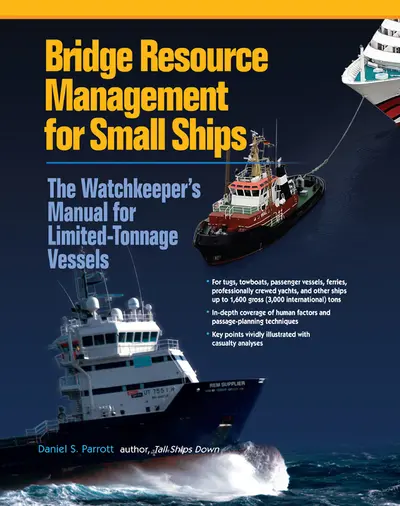My Account Details

ISBN10: 126593584X | ISBN13: 9781265935849

Step 1 . Download Adobe Digital Editions to your PC or Mac desktop/laptop.
Step 2. Register and authorize your Adobe ID (optional). To access your eBook on multiple devices, first create an Adobe ID at account.adobe.com. Then, open Adobe Digital Editions, go to the Help menu, and select "Authorize Computer" to link your Adobe ID.
Step 3. Open Your eBook. Use Adobe Digital Editions to open the file. If the eBook doesn’t open, contact customer service for assistance.
Your vessel may be equipped with the most advanced technology and the most powerful engines, but the failure to apply the basic principles of bridge resource management can still prevent you from getting where you are going. Satellite systems, ARPA, electronic charts, AIS, sophisticated communication equipment and integrated navigational systems—all these advanced technologies provide valuable capabilities. But accidents still happen, and they usually involve human error. This simple fact has made Bridge Resource Management (BRM) training a requirement for watchkeepers worldwide. Bridge Resource Management for Small Ships: The Watchkeeper’s Manual for Limited-Tonnage Vessels is the first book to address the unique needs of operators of small ships (limited-tonnage vessels) including tugs, ferries, yachts, and other passenger-carrying vessels. Features: Case histories to illustrate important points A complete course in BRM, suited for studying on your own as well as a complement to your classwork Topics include: Introduction to BRM, Standard Operating Procedures, Passage Planning, Implementing the Passage Plan, Building a Passage Plan, Situational Awareness and Human Factors, including: Overreliance, Distraction, Stress, Fatigue, Complacency, and Transition; and Human Interactions, including Communications, Teams and Teamwork, Decision Making and Leadership, and Human Error
Prologue: The Herald of Free Enterprise
Introduction: Why Bridge Resource Management?
Part I. Planning and Procedures
Chapter One. Standard Operating Procedures
Chapter Two. Passage Planning: Appraisal and Planning
Chapter Three. Implementing the Passage Plan: Execution, Conferring, and Monitoring
Chapter Four. Building a Passage Plan: Tactics and Tools
Part II. Situational Awareness and Human Factors
Chapter Five. Overreliance
Chapter Six. Distraction
Chapter Seven. Stress
Chapter Eight. Fatigue
Chapter Nine. Complacency
Chapter Ten. Transition
Part III. Human Interaction
Chapter Eleven. Communication
Chapter Twelve. Teams and Teamwork
Chapter Thirteen. Decision-Making and Leadership
Chapter Fourteen. Human Error
Appendix: Sample Master/Pilot Information Exchange (MPX)
Sources
Acknowledgments
Index
Need support? We're here to help - Get real-world support and resources every step of the way.